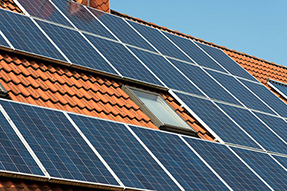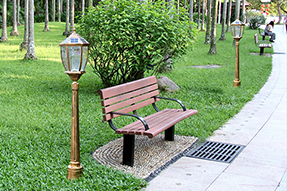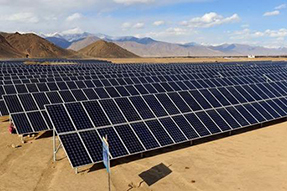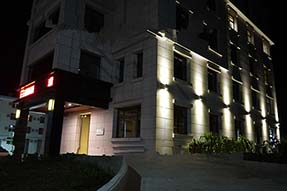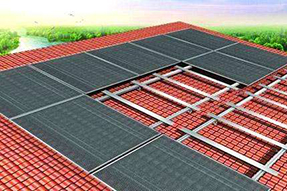How to install home solar power system ?
Solar power system is made up of solar panel, controller, storage battery, and inverter. Solar panel is the core component for solar power system, how to improve the conversion rate and reduce production cost are two main problems to solve. Presently, the efficiency of solar cells have reached about 18%~19%, the efficiency of solar modules are around 16.0%.
For different type home solar power systems, the actual target is different. In terms of on-grid solar power system, the main target is to generate more power and transmit to public grid, the overall objective is to reduce more power wastage, to make the solar power system generate the most power electricity in whole of year.
But for off-grid solar power system, the application of pv system has relative with local meteorological condition, the same loads require different allocation capacity in different location, the most power generation in whole of year is not the premium selection at many times. Meanwhile, presently, the cost of solar power generation is still high, so, if need establish an reasonable and complete solar power system, it should be effective to design, to make solar power system not only meet the power consumption requirement of loads, but also make the solar panel and battery have the premium allocation, to combine reliability and economy.
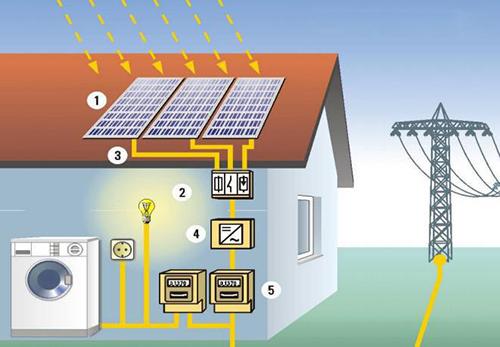
When investing to establish a home solar power system, we need get through below process:
1). Measure the parameters of installation location,
2). Analysis and process various of data which is got by measuring, to calculate the premium configuration mode of solar panels.
3). Simulate and design by software, to get the feasibility analysis report.
4). Purchase materials and transport to installation location, to install and debug.
5). Start to run formally.
In general, this is the process from market development to design, from design to the final formally.
(1) Measure the parameters of installation location.
Under mature market, it should have designer arriving at installation location to measure before design. Measuring the parameters of installation location includes to measure the available area for panel installation, available wiring situation, installation position for inverter, the load-bearing of local area, the orientation of local area and materials transportation situation, etc. It need consider the installation location for battery if it is off-grid solar power system. It need consider Grid-Tie site or whether the local area can be applicable for Grid-Tie.
(2) Installation for home solar power system.
Rooftop mounting is classified as color plate bracket, encaustic tile bracket and cement bracket. Color plate bracket is used for rooftop for covering on the surface, its bracket structure is paved on the color plate. Encaustic tile bracket is used for the house whose rooftop is encaustic tile, via special pothook to embed into Encaustic tile, its bracket structure is covering on the Encaustic tile.
On the reinforced concrete rooftop, in order to don’t destroy the waterproof structure of rooftop, most of mounting is to adopt cement bracket. This advantages of this mounting is to perfect combine the local installation tile, at the most to improve power generation. But its disadvantage is difficult to move after completing installation.
For distributed home solar power system, the most is directly to install on the slope of rooftop, namely it is color plate, encaustic tile bracket. This installation type is via special clamp to connect with roof angle, then to install the keel and solar panels on the basement, this brackets increase 20kg/m^2 on the base of original load-bearing of rooftop. This kind of installation system can be fitted with roof covering, wind don’t have many impact, easy and convenient to install and disassemble, don’t need change the structure of rooftop, moreover, this installation type can greatly make use of the idle space of roof slope, which is very suitable for material-saving idea, but it also has disadvantage, that is most slop angle of rooftop can’t meet the best tilt of solar panels.
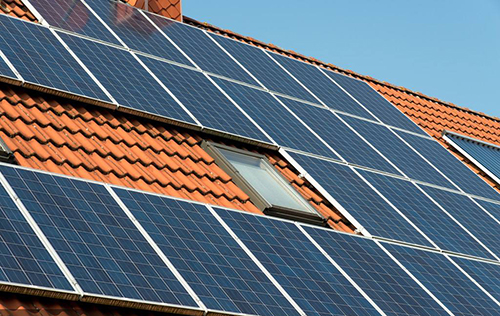
For an off-grid solar power system, the system installation volume need be according to loads of home appliances to design, the installation volume need exceed the total loads of home, otherwise, the system can’t meet the power requirement of home appliances, which would lead to the voltage of usage circuit too low, it would cause appliances or inverter stop to work or destroy electric appliance and equipment, for a standardization inverter, it would have low voltage to cutoff protection device, inverter would be stop to operate when system voltage is lower than some value. In addition, it doesn’t have to install more larger power capacity for solar modules, overlarge installation volume would have a lot of power wastage, the controller would control solar panel stopping to charge battery when the battery has been charged full and the AC terminal of inverter doesn’t have loads to consume this power, to cause solar panel stopping to work in a long time. Simultaneously, when available installation area can’t meet the power request of loads, it must set a protection circuit, and separate with home circuit, making the loads circuit which system capacity can meet connect with this system, to realize protection function.
For an on-grid solar power system, as public grid is also a loads, then don’t need consider the relation of installation volume and home loads power usage, just need consider at the most to utilize the rooftop area, to enhance installation volume, then to create more economic effectiveness.
In a word, to install a solar power system need consider more factors, above is just briefly introduction for the system installation. Every solar project need be specially considered according to actual situation, if need learn more, you can consult Bingsolar Power or your local EPC companies.
Bingsolar Power, 13th, December, 2017
